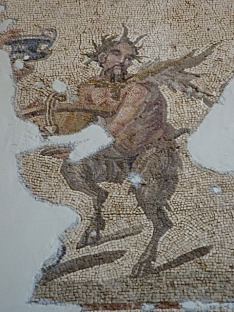The Hatay is the tongue of Turkey that hangs down into Syria and the Middle East. Culturally and architecturally, it has much in common with Syria and Lebanon, and for some time in the early 20th century the Hatay Republic was politically part of Syria too. Its largest and most important town is Antakya, which is also called Hatay. Its most important port is İskenderun.
Today it’s a vibrant part of the country with many Arabic speakers, its politics largely left-leaning. It’s home to many Alevis and Alawis as well as to Turkey’s last wholly Armenian village, Vakıflı.
The name “Hatay” was bestowed on the area by Atatürk and is thought to be derived from the Hittite name for the area which was Hatina.
Recent history has not been kind to the Hatay. Not only did it bear the brunt of the exodus from Syria after the outbreak of war there in 2011 but it was also the part of Turkey most adversely affected by the twin earthquakes of February 2023. A year later, it is barely on the path to recovery, with Antakya and the second largest town, Samandağ, both completly shattered.
Backstory
On one of the main transit routes for reaching the Middle East, the part of Turkey now called Hatay has had a typically turbulent past which has left it with a rich legacy of ruined castles, many of them dating back to the Crusader period.
It’s also an area with lots of ancient settlement mounds that suggest that there were once separate city-states here. They were ruled in turn by the Egyptians, the Hittites, the Assyrians and the Persians before, in 330 BC, Alexander the Great defeated the Persian king Darius at the Battle of Issus, north of İskenderun, to take control of the area. Antakya Museum houses the spectacular mosaics found in Harbiye
Antakya Museum houses the spectacular mosaics found in Harbiye
Antakya was founded c.300 BC by Seleucus Nicator I, one of Alexander’s generals, and named after his father Antiochus. It rose to become a powerful Roman city, believed to have had a population of around 500,000 at one point when the only larger Roman cities were Rome and Alexandria.
Like Constantinople (Istanbul), it was a walled city, with its walls constructed in stages between the first and fourth centuries. Like Constantinople, too, much of its water also had to be brought into the city from outside, in this case from Daphne (Harbiye), using aqueducts.
In the seventh century Arab invasions brought an end to Roman authority in the area and it was not recovered by the Byzantines for almost 300 years. In 1084 the Seljuks seized Antioch but it fell to the Crusaders in 1098. They established a princedom that lasted until 1268 when the Egyptian Mamluks overthrew it.
In 1517 the Ottomans captured Antakya and İskenderun which became part of the province of Aleppo and remained in Ottoman hands until 1918.
In November 1918 the British occupied İskenderun and handed it over to the French. In 1921 the entire Hatay region was annexed to Syria as the Sanjak of İskenderun under French control.
Resistance to French rule soon broke out and in 1936 Atatürk gave the name “Hatay” to the area in a speech to the Grand Assembly. In 1938 a Republic of Hatay was created. It lasted less than 11 months, its assembly voting to join Turkey in June 1939 (alas, the parliament building fell victim to the earthquakes in 2023)..
 Eating
Eating
The cuisine of the Hatay reflects its proximity to Syria. This is where you’ll find some of the tastiest hummus in the country, not to mention the most delicious künefe, a sweet baked with soft cheese at its centre.
Sleeping
The best choice of accommodation used to be in Antakya which had some fine boutique hotels, mostly destroyed by the earthquakes. İskenderun also offered places to stay as did the small beach resort of Arsuz but both towns were also horribly damaged. At the start of 2024 it was wise to check carefully on the accommodation situation in the area before setting out.
Transport info
Antakya is/was the main transport hub for the area. There is an airport 25km from the town with flights to İstanbul and Ankara. It was damaged in the earthquakes but is now back in action. Buses fan out around the country and around Hatay from Antakya too.
The main border crossing point between Turkey and Syria used to be just outside the small town of Reyhanlı (for Halep/Aleppo). There was a second crossing at Yayladağı (for Laskiye/Latakia). For the foreseeable future it would be wise to stay well away from either place.
Places to visit (after checking first for the post-quake situation)
The Hatay wears its politics on its sleeve: https://www.facebook.com/media/set/?set=a.291423287691577.1073741863.137912259709348&type=1
Read more about künefe: https://www.bbc.com/travel/article/20230417-knefe-the-beloved-dessert-rebuilding-turkey


